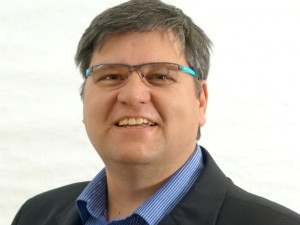Johannesburg, 30 Aug 2017

The printing industry doesn't have a good reputation for being environmentally friendly. Most e-mails end with the disclaimer 'don't print this e-mail and save a tree', or something along those lines. However, behind the scenes, the industry is doing its very best to be greener, to develop more environmentally friendly processes, and very real progress is being made in reducing the impact of print on the earth.
Kemtek product specialist, conventional division, Johan Faurie, says: "A challenge that the printing industry faces, much like any other industry, is that whatever technology it implements has to improve on the speed and quality of what went before. All too often in the past, environmentally friendly inks, paper and chemicals didn't deliver on all of the requirements of a busy print shop. However, great strides are being made, particularly by European manufacturers. There's enormous pressure on the European printing industry to become greener in its processes, to use less chemicals, less water, less electricity and to recycle wherever it can. This is resulting in some outstanding new developments, and one process that can really hold its own is low chemistry thermal plate production."
The benefits of implementing this greener approach to plate production include lower chemistry consumption, lower processor maintenance, lower waste production, a cleaner working environment and better quality stability, profiting both the environment and the business's bottom line.
A Kimberley-based family-owned and operated printing business, Swift Print has taken its first major step towards being an environmentally friendlier operation. Co-owner Tommy Evans explains: "We've been in business since January 1988, when we opened our doors as a small multi-litho print shop. In 2012, Tommy and his brother Luke took over the daily operations from their parents. Over the past 30 years, we've seen the entire print market continually metamorphosise, driven mainly by customers demanding the best possible quality print job. Our company has always tried to stay abreast of current trends and customer requirements.
"Today, as a small- to medium-sized print shop, we offer everything from digital colour to wide-format to litho printing. This allows us to produce print jobs ranging from business cards to annual reports to signage. As older technology and equipment became obsolete, we're replaced it with kit that's aligned with global trends. And reducing one's carbon footprint and going green is one trend that we feel strongly about."
When Swift Print identified a need to replace its plate-making equipment, it turned to Kemtek for advice. Evans says: "We knew we had to replace an older plate processor, but knew very little about how to do so in an environmentally friendly fashion. Kemtek's Johan Faurie educated us about international trends in greener plate processing technology, and demonstrated just how wasteful the older machine was in terms of water usage - and how abrasive the chemicals were. The Fujifilm Zac plate processor uses chemicals that are non-corrosive, so they're friendlier to users' hands and it means we're not pumping corrosive liquid down the drain.
"Not only are we contributing positively towards a greener footprint, but the cost savings have been significant since we've changed over to this process. Far less maintenance is required, we're managing bigger plate runs between developer changes and consuming about a fifth of the water required to process a plate."
Another plus is that the new technology was easier to operate than the previous plate processor, so Swift Print staff were up and running on the equipment within a matter of days. Evans says: "Training was conducted on site over a weekend and we've had hassle-free operation since. We're proud that we're operating in line with international best practice when it comes to being environmentally friendly, and plan to carry on moving in this direction going forward as other old and outdated equipment needs replacing or upgrading. I would imagine the next step would be greener inks, but we look to suppliers like Kemtek to advise us on what's happening on the international market."
Business benefits of low chemical plate processing at a glance:
* A full bath of developer can now develop up to 15 000m2 of plates resulting in substantial savings in developer consumption.
* Maintaining perfect developer activity allows the developer bath life to be greatly extended beyond the norm for developing systems.
* Typically can achieve bath life figures four or more times greater than normal plate processing systems.
* The chemistry used for processing plates is a non-silicate-based recipe. This makes a much longer bath life possible without the increase in developer sludge and filter blockages.
* Because of the intelligent control over replenisher delivery, the processor is more stable, making it easier to achieve high quality, irrespective of changes to environmental conditions.
Share
